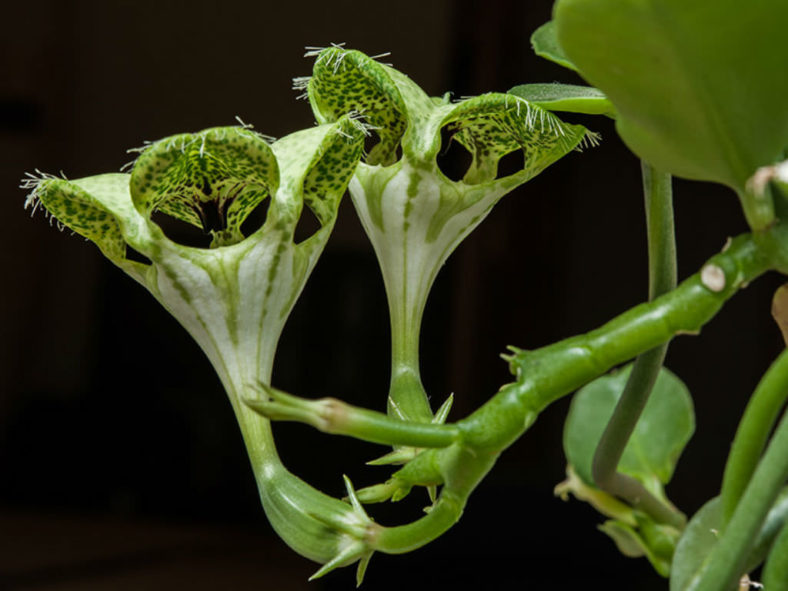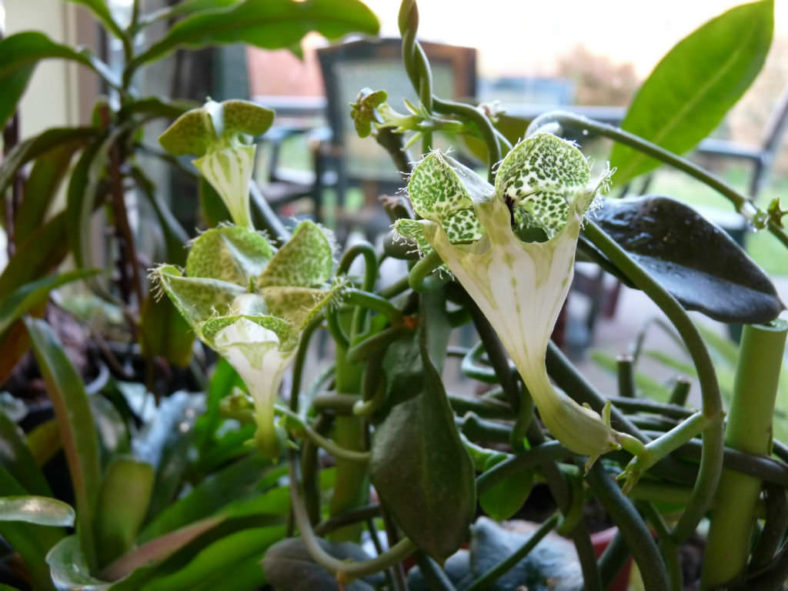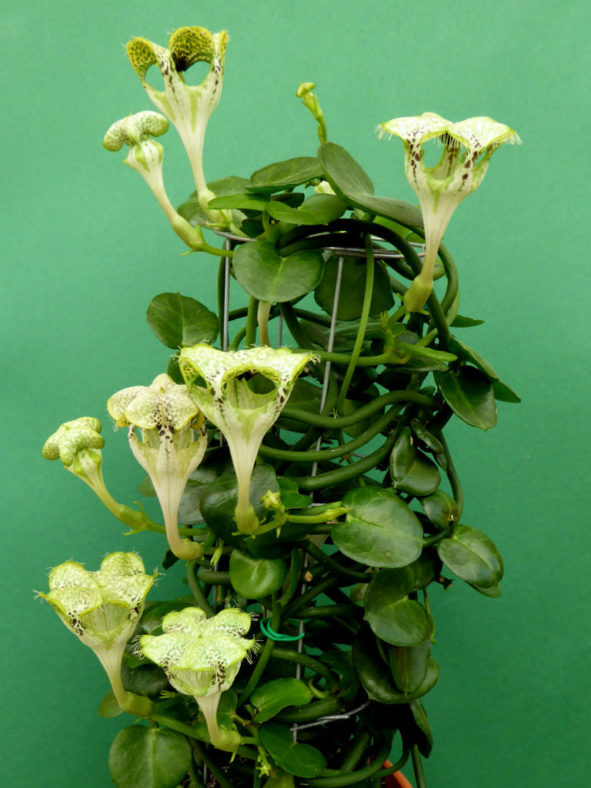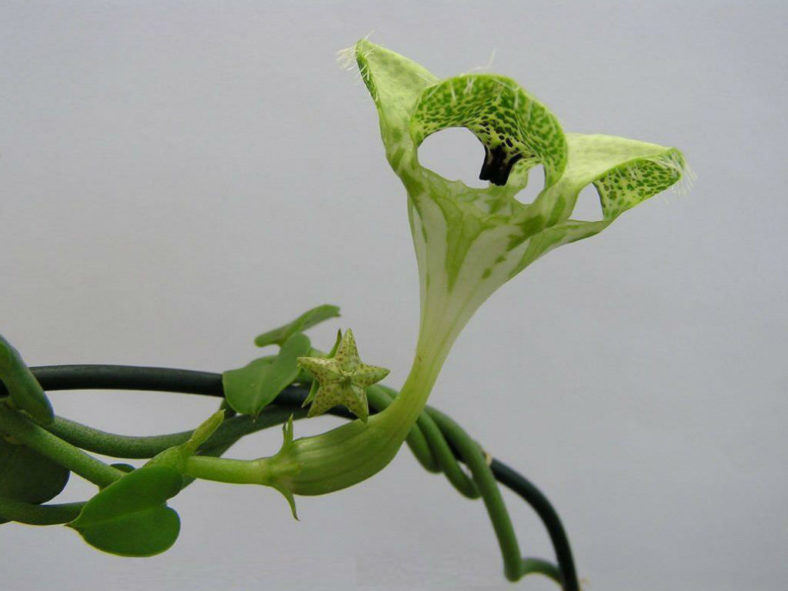Scientific Name
Ceropegia sandersonii Decne. ex Hook.f.
Common Name(s)
Fountain Flower, Giant Ceropegia, Parachute Flower, Parachute Plant, Sanderson's Ceropegia, Umbrella Flower, Umbrella Plant, Windowed Flowers
Synonym(s)
Ceropegia monteiroae, Ceropegia sandersoniae
Scientific Classification
Family: Apocynaceae
Subfamily: Asclepiadoideae
Tribe: Ceropegieae
Genus: Ceropegia
Origin
Ceropegia sandersonii is native to Mozambique, South Africa, and Swaziland.
Description
Ceropegia sandersonii is a succulent plant with twining stems that bear heart-shaped leaves.
The solitary flowers are green, parachute-shaped, with a funnel-shaped tube reaching up to 2 inches (5 cm) in length. They appear in summer and fall.

Hardiness
USDA hardiness zones 10b to 11b: from 35 °F (+1.7 °C) to 50 °F (+10 °C).
How to Grow and Care
A gritty compost is suitable, and clay pots help with drainage, especially for the species with white thickened roots, which are the most susceptible to rotting, and for species that form large tubers. Ceropegias appreciate water and a little fertilizer during warm weather, although some watering care is required for the more delicate species. The vine-like species can suffer from prolonged drought.
Typically, many of these species grow and climb naturally among bushes, which provide shade and humidity to the base, while the vegetative growth is in the light. Where tubers occur, they are best planted on the compost's surface, and the vegetative growth is allowed to twine around supports or trail down from a hanging pot. The latter growth mode has the advantage of not using valuable bench space. Small tubers formed at joints in the thin stems of some species can be used for propagation. If the tuber rots or dries out, don't panic. If some of the top growth is still in reasonable condition, it may be possible to save the plant by re-rooting stems in damp gravel.
Learn more at How to Grow and Care for Ceropegia.
Links
- Back to genus Ceropegia
- Succupedia: Browse succulents by Scientific Name, Common Name, Genus, Family, USDA Hardiness Zone, Origin, or cacti by Genus
Photo Gallery
Click on a photo to see a larger version.


